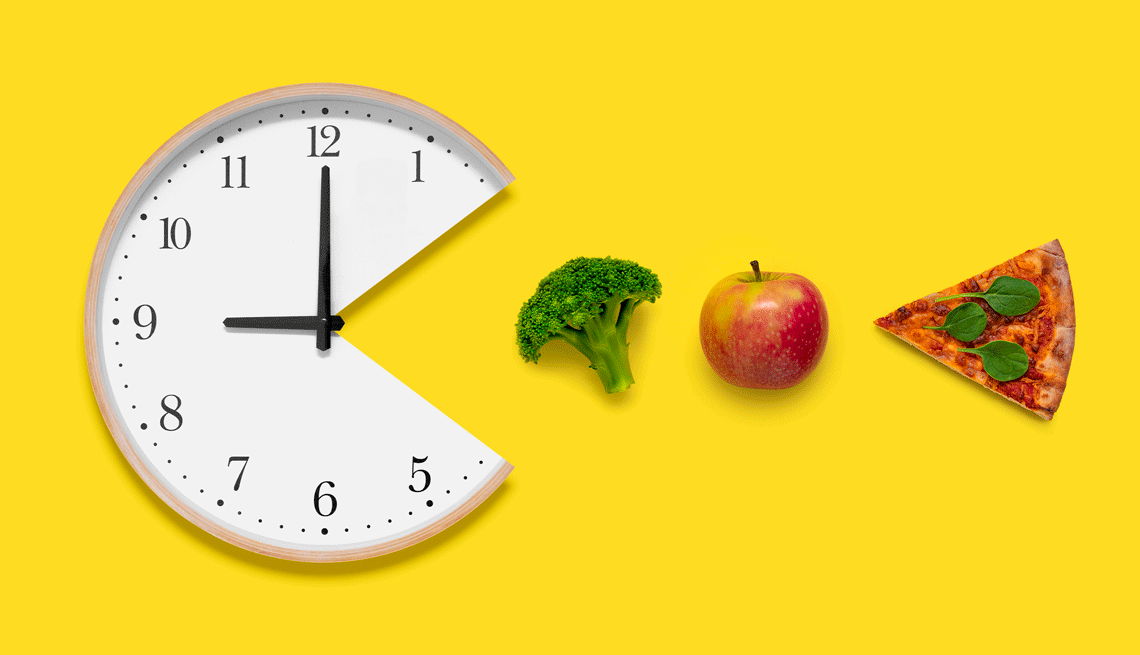Play all audios:
Domenic Bahmann Facebook Twitter LinkedIn
When Nancy Irwin, 69, saw how well intermittent fasting helped a couple of her friends lose weight, she decided to give it a try. The Los Angeles psychologist wanted to drop a few pounds and
reduce the amount of fat around her midsection. She also had a more serious concern: “I'm insulin resistant and could kick into pre-diabetes if I'm not really mindful.”
Intermittent fasting involves restricting food to certain hours of the day or days of the week. There are different ways to go about it. Irwin settled on a daily regimen in which she eats
only between noon and 7 or 8 p.m. “The beauty of this program is you choose your window,” she says, adding, “I'm really not hungry in the mornings.”
Irwin shed 13 pounds — impressive — but she is especially delighted with the other outcomes. “I sleep well, have energy and my skin glows,” she says. “I wouldn't say my belly is as flat as
when I was in my 20s and 30s, but it’s way better. My clothes hang better, and I’ve lost a dress size.” Significantly, she now finds it easier to keep her A1C level — a measure of blood
sugar over time — in the normal range.
While weight loss trends come and go, intermittent fasting seems here to stay. A growing body of evidence suggests that the approach has benefits beyond weight loss. It seems to help with a
slew of other health concerns faced by many people 50 plus, including improved cognitive function, cellular rejuvenation, increased longevity, reduced inflammation, better circadian rhythm
and digestion.
Getting started with intermittent fastingWhen it comes to intermittent fasting, two of the most popular methods—16/8 and 5:2—offer different benefits and challenges, especially for older adults:
The 16/8 method involves fastingfor 16 hours and consuming all meals within an 8-hour window.The 5:2 approach allows normal eating five days a week, while two non-consecutive days are limited to one regular-sized meal
around 500 to 600 calories.
If limiting your eating to an 8-hour window seems like too much of a challenge, for the first month try to eat all your meals within 10 hours. In month two, shrink the feeding window to
eight hours, says Mark Mattson, an adjunct professor of neuroscience at the Solomon H. Snyder Department of Neuroscience at Johns Hopkins School of Medicine in Baltimore. During the fasting
hours, drinking water and zero-calorie beverages such as black coffee or tea, is allowed.

